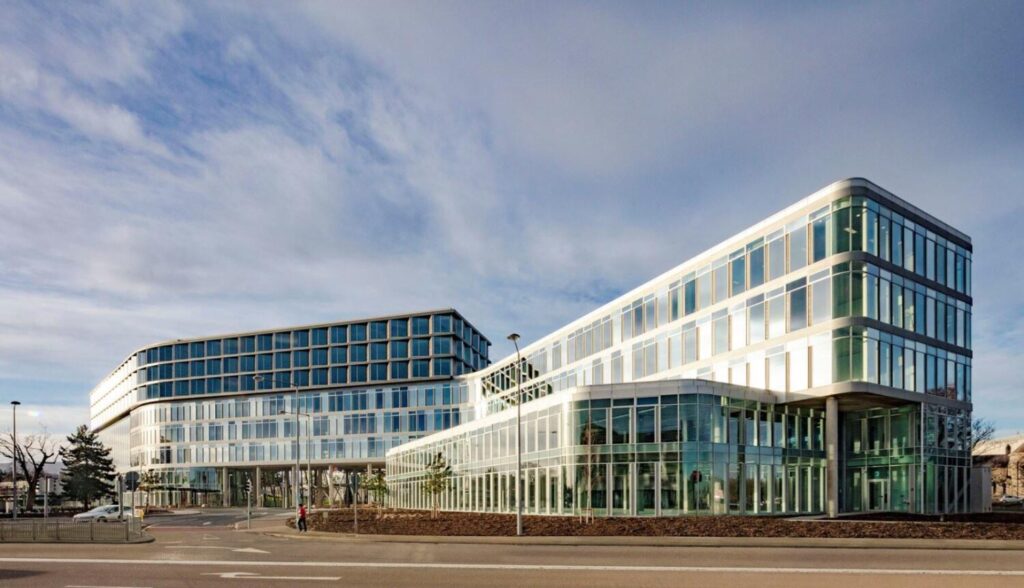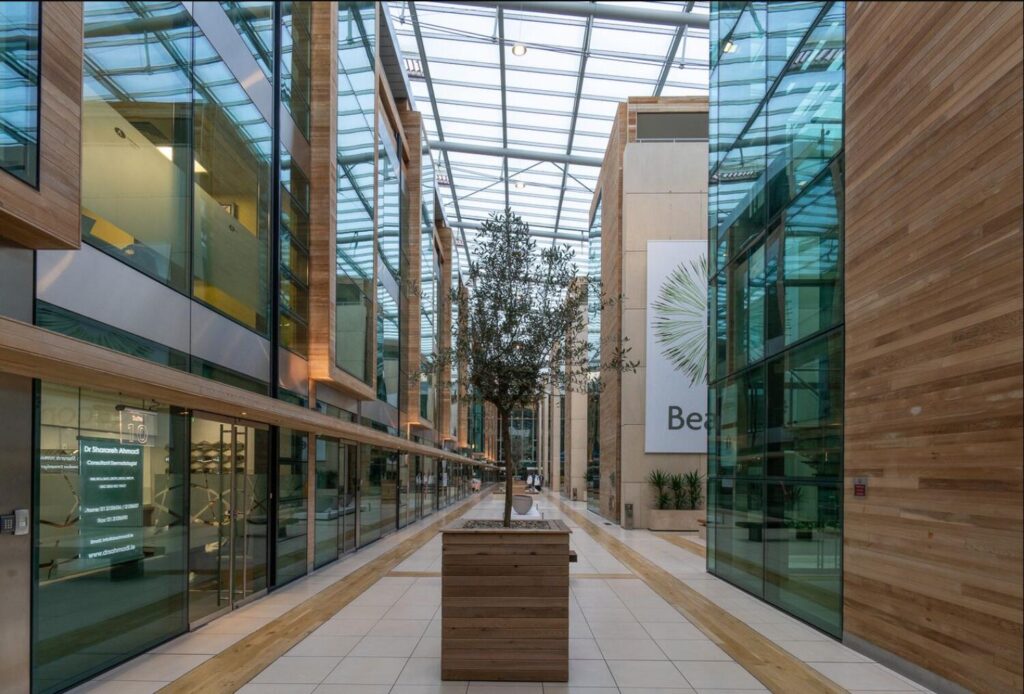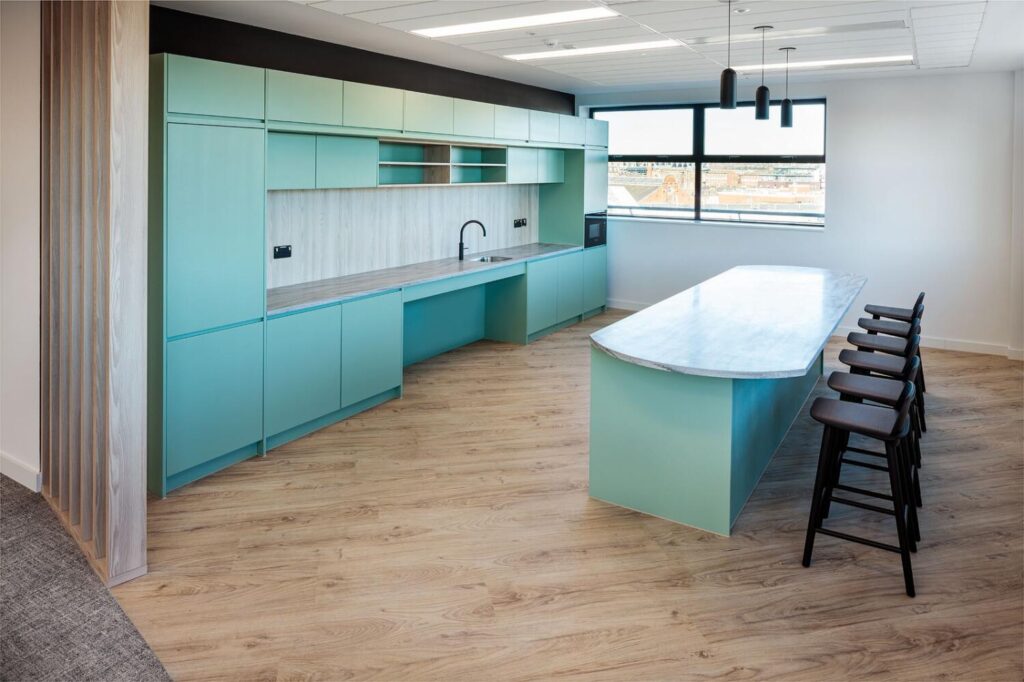THE BUSINESS POST, JUNE 24 2024

Patricia Ward
With so much debate around converting offices to living spaces, new research suggests a greater potential for office buildings to be repurposed for healthcare use.
The latest office occupier leasing statistics from the first quarter of 2024 followed the trend of the commercial property investment market, with results being well below their long term averages.
Investment turnover in Q1 2024 reached €162 million, significantly down from the 10 year Q1 average of €717 million.
Office lettings completed in Q1 2024 reached approximately 170,000 square feet, significantly down when compared to the 10 year Q1 average of approximately 580,000 square feet.
There is however a healthy reserved pipeline of over 800,000 square feet of office accommodation both agreed and going through the legal process.
Reports from agents and solicitors involved in conveyancing transactions at present point to a longer than usual timeline to conclude. This is a feature repeated in other European states where lawyers are confirming occupiers are anxious to understand all their lease obligations before committing.
The office market continues to make adjustments from Covid-19 and the numbers now working from home, either full or part time, are mostly stable.
The Dublin office market rebounded in 2015 with its strongest performance since 2007, at that time the top leasing transaction was Bank of Ireland signing a 25 year lease at 27-33 Upper Baggot Street in Dublin 4, which allowed Kennedy Wilson to sell the investment for €141 million and a yield of just 4 per cent in 2020.
The sale of 40 Molesworth Street in Q2 this year at a yield of 5.15 per cent is the first Grade A building to evaluate the market in some time.
After the rebound in 2015, the office market continued to perform strongly for the next four years, each year leasing more than three million square feet, before decreasing during the pandemic years of 2020 and 2021.
Since then, we have had two vastly different years with 2.74 million square feet leased in 2022 and only 1.38 million square feet leased in 2023.
So far this year the quarter one results were the lowest in over ten years at approximately 170,000 square feet.
The quarter two results should give a glimpse into the outcome for the remaining year, and the market will be paying particular attention to the reserved stock.
Currently high profile occupiers seeking new headquarters in Dublin include EY, Apple, Stripe, and Workday. If and when these land, they will make a positive impact on the numbers due to their size requirements.
With a more uncertain backdrop to office occupier demand, some landlords have engaged with their tenants ahead of lease events. When tenants come to the end of leases and negotiate to remain under a new lease, these lettings are not tracked in the market and do not form part of the collected statistics.
TWM has recently advised both landlords and tenants on lease renewals totalling over 165,000 square feet. In all cases ESG has been central to the discussions on both sides, landlords are willing and want to upgrade their properties, and tenants are committing to longer leases in return.
What has surprised the occupier market is the ability of landlords to reach top BERS of B1, A3 and A2 on older buildings in excess of 20 and 30 years.
We have worked on lease renewals where significantly higher BERs were achieved by a combination of CAT A (landlord) and CAT B (tenant) fit-out and in others using purely CAT A.
Older buildings tend to have higher car parking ratios as a result of older and more relaxed planning laws. These additional spaces are yielding pathways to accommodate secure bicycle stores, changing areas, showers and EV charging stations.
TWM is advising our landlord clients to open discussions up to two or three years in advance of expiry dates particularly where refurbishment is an option.
Opening discussions earlier allows for more flexible discussions around the contentious issue of dilapidations. Instead of this becoming a protracted and expensive argument, it can pivot to a wider and more inclusive discussion.
We have been tracking the changes taking place in the office occupier market including the repurposing of office buildings.
As the occupier market has become more nuanced and a number of office buildings are being repurposed, it is interesting to assess what is happening in a broader sense.
We calculate that well over 600,000 square feet in medical office or clinical space has been leased or purchased in office buildings since the start of 2023.

The Seamark Building at Elmpark in Dublin 4, recently purchased by the HSE, which had originally been earmarked as a day surgery clinic when built in 2007.
The largest deal being the recent purchase of 319,000 square feet in Elmpark by the Health Service Executive, this will allow the HSE to make room for the new National Maternity Hospital on the St Vincent’s Hospital campus.
Ironically, one half of the front block of Elmpark was originally designed to be a day surgery clinic when it was completed in 2007.
The need for consultation rooms, accommodation for administration and support staff and even laboratory space occupies valuable bed spaces in hospitals, and this is where we are seeing a move to free up space that could be accommodated elsewhere.
Medical rents have traditionally followed office rents as there is often only a slight difference in terms of the specification required. Where medical use is required for either clinical or surgical uses and tenant capital expenditure is very high, purchase options are often preferred by occupiers.
The requirement of medical occupiers can vary significantly from turnkey to concrete shell, depending on the end use. The medical sector, from a property investment perspective, is likely to expand to include those involved in the manufacture and design of medical instruments and those insuring the healthcare sector.

The Mall, Beacon Court in Sandyford, a prime example of were medical and office spaces exit in multi-let buildings.
The use of buildings for office space and medical use has comfortably co-located and a good example of this is Beacon South Quarter in Sandyford where both medical and office use exists and often in multi-let buildings.
In previous decades, the Georgian squares of Dublin were popular with consultant’s rooms often sharing with office or residential uses. The provision of high parking ratios, easily accessed spaces, good surface parking along with strong public transport links are key to attracting these occupiers, as is access to shops and cafe facilities, which are often already in situ in office buildings.

The use of buildings for office space and medical use has comfortably co-located and a good example of this is Beacon South Quarter in Sandyford where both medical and office use exists and often in multi-let buildings.
In previous decades, the Georgian squares of Dublin were popular with consultant’s rooms often sharing with office or residential uses. The provision of high parking ratios, easily accessed spaces, good surface parking along with strong public transport links are key to attracting these occupiers, as is access to shops and cafe facilities, which are often already in situ in office buildings.
TWM is marketing Level 5 in Custom House Plaza 3 and office suite with B1 BER and all new CAT A and medical use. The floor includes a private fully fitted kitchen, accessible showers and toilets for the tenant use only. The plaza benefits from an on-site Bear Market café and direct access to Dart, Luas and main line trains and Connolly Station.
Investors looking for assets that fit a ‘social funds’ narrative are interested in sectors such as education, healthcare, medical equipment, social housing, and green energy.
Alongside financial returns investors want to point to positive social impacts within their portfolio. TWM expects to see a new layer of occupier due diligence and analysis along with traditional yields and building credentials.
Patricia Ward is a director at TWM’s Investment and Agency team